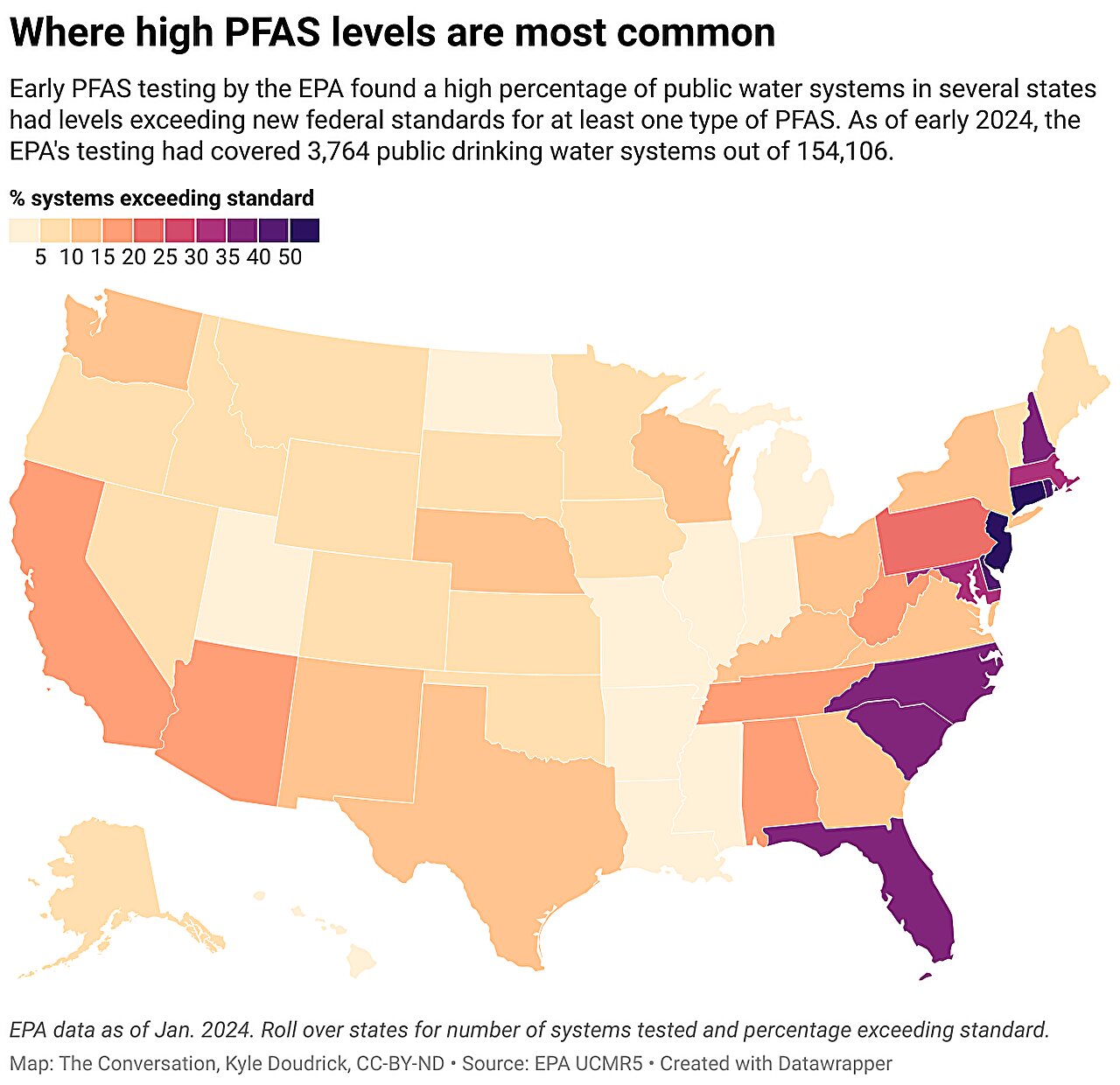
Rollback of PFAS Drinking Water Standards in the US Raises Alarm for Public Health and Environmental Safety
In April 2024, during President Joe Biden’s administration, the United States enacted its inaugural legally binding national drinking water regulations for six per- and polyfluoroalkyl substances (PFAS). These pioneering standards represented a significant advancement in tackling the health and environmental hazards posed by these highly enduring chemicals. Nevertheless, only a few months later, the Environmental Protection Agency (EPA), now operating under the Trump administration, declared a delay in enforcing rules for two of the most recognized PFAS and rolled back regulations for four additional substances, inciting considerable criticism from scientists, public health authorities, and environmental advocacy groups.
What Are PFAS?
PFAS, an abbreviation for per- and polyfluoroalkyl substances, comprise a collection of about 15,000 synthetic chemicals that have been extensively used commercially since the 1950s. Often referred to as “forever chemicals,” PFAS are distinguished by their robust carbon–fluorine bonds, which render them resistant to breakdown in both natural environments and the human body. These properties have made PFAS desirable for application in products necessitating durability against heat, oil, water, or friction, including non-stick cookware, stain-resistant carpets, water-repellent apparel, and firefighting foams.
However, their chemical resilience also poses significant threats. PFAS are highly mobile in the environment, capable of contaminating soil, groundwater, and drinking water supplies. Once they enter the human body, they can accumulate over time—resulting in potential health hazards. The most researched PFAS, such as perfluorooctanoic acid (PFOA) and perfluorooctane sulfonic acid (PFOS), have been associated with severe health issues including kidney and testicular cancer, developmental disorders, hormonal disruptions, weakened immune responses, and reproductive problems.
Biden-Era PFAS Regulations
In response to an expanding base of scientific research and rising public alarm, the Biden administration’s EPA established national Maximum Contaminant Levels (MCLs) for six PFAS in April 2024:
– 4 parts per trillion (ppt) for PFOA and PFOS
– 10 ppt each for PFHxS, PFNA, PFBS, and GenX (HFPO-DA)
In addition to these limits, the rule implemented a “hazard index” framework for evaluating the cumulative risk from combinations of PFAS. Water systems throughout the U.S. were given until 2029 to comply with these standards.
These actions were celebrated by scientists and environmentalists as a long-overdue measure to regulate PFAS pollution. The regulations were informed by years of toxicological research and assessments by the EPA’s PFAS Science Advisory Board.
Trump Administration Rollback
On May 14, 2024, the EPA, now under the Trump administration, revealed it would prolong the compliance deadline for PFOA and PFOS limits to 2031—a two-year extension—and rescind national standards for PFHxS, PFNA, PFBS, and GenX. The rollback also eradicated the hazard index approach, which was a critical tool in controlling cumulative exposure to various PFAS compounds.
The justification for these alterations remains ambiguous, but worries about costs associated with infrastructure improvements and data reporting seem to play a significant role. The EPA’s reversal is consistent with other recent rollbacks, including delaying PFAS reporting regulations for manufacturers under the Toxic Substances Control Act.
Scientific and Environmental Community Reactions
Experts and scholars quickly condemned the rollback. Jamie DeWitt, an environmental and molecular toxicologist at Oregon State University and former member of the EPA’s PFAS advisory board, asserted that “there is no scientific reason” to rescind the standards for the four removed PFAS compounds. She cautioned that ongoing unregulated exposure could pose serious health threats to millions of Americans.
Similarly, Dr. Will Dichtel, an organic chemist at Northwestern University specializing in PFAS, voiced concern over the removal of the hazard index. “It’s taken decades for us to regulate just these few PFAS pollutants (out of thousands), so this policy change is a tremendous setback to common sense water stewardship,” he remarked.
Graham Peaslee, a physicist at Notre Dame University prominent for his work on PFAS detection, criticized the notion that only PFOA and PFOS warrant concern. “PFNA, PFHxS and GenX all have ample toxicology data that indicate toxicity at levels comparable to PFOA and PFOS, so disregarding those compounds seems short-sighted at best,” he noted.
Beyond the academic realm, environmental advocacy groups condemned the rollback. Erik Olson of the Natural Resources Defense Council characterized the action as “not only harmful, it’s illegal,” referencing legal provisions that limit the EPA’s capacity to repeal public health standards without solid justification.
A Global Perspective
The United States is not uniquely affected by PFAS contamination.